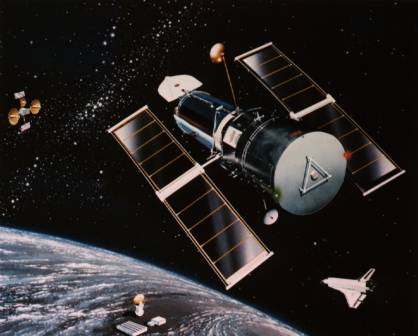
Hubble Space Telescope
The first large orbital optical observatory. Built from 1978 to 1990 at a cost of $1.5 billion, the HST (named for astronomer E. P. Hubble) was expected to provide the clearest view yet obtained of the universe. Using a Ritchey-Chrétien design that affords wider and flatter fields of view than traditional Cassegrain systems, the telescope has a 7.9-ft (2.4-m) primary mirror that can observe 24 hours a day (but usually observes less than 20% of the time) in a sky that is always clear and always has perfect seeing. Among the instruments are two high-resolution cameras and two spectrographs. The HST was launched from shuttle Atlantis in 1990. Initial tests taken after its launch showed that the primary mirror was astigmatic, and it was discovered that the mirror had been mistakenly ground to the wrong figure. The telescope was repaired by astronauts of the space shuttle Endeavour in Dec., 1993, who replaced critical instruments and added corrective optics while in orbit. |

